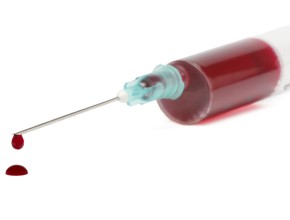Gastric bypass surgery: outcomes after 12 years
This observational study provides 12-year follow-up information on the effects of gastric bypass surgery (Roux-en-Y) on obesity in over 1,000 patients.
The study involved single-center patients who were operated (surgery group) or who sought operation but have not received it, mostly due to the lack of insurance (control group). The mean baseline weight in the surgical group was 134 kg, while the mean baseline weight in the control group was 130 kg. At 2 years, the loss of weight was over 45 kg in the surgical group versus 3 kg in the control group; by year 12, the loss amounted to 35 kg and 3 kg, respectively.
Among surgical patients who had diabetes at baseline (88 patients), remission occurred in 75% of patients at 2 years, 62% of patients at 6 years, and 51% of patients at 12 years. The 12-year incidence of type 2 diabetes in those who did not have it at baseline was 3% in the surgery group and 26% in the control group. New-onset hypertension was diagnosed in 16% versus 41% of patients, respectively, and resolved in 36% versus 10% of patients who had it at baseline.
The number of deaths in this observational study was not statistically different among groups; it was noted that all 7 deaths by suicide occurred among patients who underwent surgery.
Effects of azithromycin on asthma exacerbations and quality of life in uncontrolled asthma
Stanbrook MB. Azithromycin reduced exacerbations and improved QoL in symptomatic asthma despite inhaled maintenance therapy. Ann Intern Med. 2017 Oct 17;167(8):JC42. doi: 10.7326/ACPJC-2017-167-8-042. PubMed PMID: 29049761.
This study examined the potential effects of azithromycin as asthma therapy added in patients with symptoms persisting despite treatment with inhaled corticosteroids (ICSs) and long-acting beta-agonists (LABAs).
Over 400 patients with symptoms of asthma despite the use of medium to high doses of ICSs (100%) and regular use of LABAs (≥98%) received either 500 mg of azithromycin 3 times per week or placebo. The use of azithromycin decreased the risk of asthma exacerbation (by about 40%, from 1.86 to 1.07 per patient-year) and severe exacerbations (from 1.07 to 0.61 per patient-year). The proportion of patients experiencing any exacerbations during the year of treatment was decreased from 61% on placebo to 44% on azithromycin. There was an overall small improvement in asthma-related quality of life.
The proportion of patients who had diarrhea was higher on treatment (34% vs 19%), and the frequency of new azithromycin-resistant organisms in sputum was larger in the azithromycin group (49% vs 29%), although it was not statistically significant.
The authors concluded that azithromycin may be an option in patients remaining symptomatic on treatment with ICSs and LABAs. The commentary points out that only a small proportion of patients used long-acting muscarinic antagonists or a leukotriene modifier.
NIV for acute respiratory failure: ERS/ATS clinical practice guidelines. Part 2
The goal of the new European Respiratory Society and American Thoracic Society guidelines was to provide recommendations and suggestions (conditional or weak recommendations) on the application of noninvasive ventilation (NIV) in acute respiratory failure (ARF) occurring in a variety of situations. NIV refers here to continuous positive airway pressure (CPAP) or to variable positive airway pressure (usually bilevel, with a higher pressure delivered during inspiration).
Strong recommendations are issued when most individuals would want the recommended course of action, clinicians should use them in most situations, and recommendations could serve as policy and a performance measure. With weak recommendations (suggestions), the majority of patients would want the suggested course of action but many would not, clinicians should tailor their actions to individual circumstances and patient’s preferences, and the subject of policy may be the consideration of a given intervention rather than its institution. (The concepts of strong and weak recommendations are used according to the GRADE, or Grading of Recommendations, Assessment, Development, and Evaluation, method; see our introduction to the GRADE system.)
For the use of NIV in ARF related to chronic obstructive pulmonary disease exacerbations, cardiogenic pulmonary edema, or asthma, see Publications of the Week, October 23.
In the setting of ARF occurring among immunocompromised patients, the authors:
- Reviewed evidence of generally low or moderate certainty indicating probable decreases in mortality, the need for intubation, and rates of nosocomial pneumonia.
- Stressed the fact that a trial of NIV in such patients should be accompanied by admission to an intensive care unit (ICU), strict monitoring, and immediate availability of intubation.
- Suggested a trial of early NIV in immunocompromised patients with ARF of various etiologies.
In the setting of newly developed ARF without previous chronic respiratory disease (a nonspecific group of patients usually presenting with hypoxia, including those with pneumonia or adult respiratory distress syndrome), the authors have not found enough evidence to issue recommendations or suggestions. They stated that in special situations (an ICU setting with an experienced team and a cooperative patient), a short trial – as short as 1 hour – may be attempted. They pointed out the recent evidence suggesting possible advantages over NIV of high-flow nasal cannula therapy, delivering humidified and heated oxygenated gas at a rate of 30 to 60 L per minute, but have not considered this modality in the guidelines.
In the setting of postoperative hypoxic respiratory failure, the authors:
- Reviewed evidence suggesting that the use of NIV is associated with decreases in mortality, the need for intubation, and rates of nosocomial pneumonia.
- Issued a suggestion to use NIV in patients with postoperative ARF.
- Warned about the need to address the common intra-abdominal or intrathoracic complications first (eg, anastomotic leak).
In the setting of palliative care, the authors:
- Identified different subsets of patients in whom NIV may be considered: those with irreversible disease in whom surviving hospitalization is the goal without limitations of therapy (type 1); those with irreversible disease who forgo intubation and mechanical ventilation but still would like to survive hospitalization (type 2); and those in whom the goal is to prolong life for a short time (eg, to allow communication with the family) and in whom NIV may be considered exclusively for symptom control (type 3).
- Suggested offering NIV in the palliative care setting to patients with dyspnea (type 3).
- Have not issued recommendations regarding type 2 patients but noted that a significant proportion of type 3 patients survive till discharge from hospital.
 English
English
 Español
Español
 українська
українська







